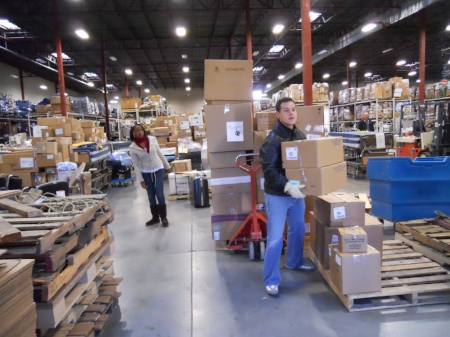Many times in the 30-year history of Project C.U.R.E. I was tempted to believe: The task is too daunting, the enemy too great, somebody keeps moving the finish line, and just how do you bridge the gap and fill in this bottomless hole of poverty, sickness, corruption, and death? The response was always: take another deep breath, schedule one more international assessment trip, send out one more ocean-going cargo container of medical supplies, keep swinging, keep fighting, keep pushing. I would often draw on biblical admonitions like:
“So, take a new grip with your tired hands, stand firm on your shaky legs, and mark out a straight, smooth path for your feet so that those who follow you though weak and lame, will not fall and hurt themselves, but become strong.” (Heb. 12:12)
But we never really knew if we were making significant headway in the race. We knew we were saving thousands of precious lives and transforming thousands of needy hospitals and clinics, and encouraging tens of thousands of struggling doctors and nurses. We knew that if there were to be strong economies in the developing countries, those economies would have to be built on strong and healthy people. We just kept at the task.
Recently, however, a friend of Project C.U.R.E.’s President, Dr. Douglas Jackson, wrote a book, published by Simon & Schuster, entitled, “The Great Surge.” Steven Radelet is the author. He is a professor at Georgetown University and over the past thirty years has become a distinguished expert and advisor to developing nations. Thanks to Dr. Radelet’s incomparable and painstaking work, we now have a scoreboard erected at the end of the playing field. We can now get a glimpse of the real score. Radelet claims:
“We live at a time of the greatest development progress among the global poor in the history of the world. Never before have so many people, in so many developing countries, made so much progress in so short a time in reducing poverty, increasing incomes, improving health, reducing conflict and war, and spreading democracy.”
Dr. Radelet goes on to explain that over 1 billion people have been lifted out of extreme poverty during the past twenty years. But few people would have ever heard of such a thing or believed it should they have heard the information regarding one of the greatest achievements in human history. He cites a recent survey showing that 66 percent of Americans believe that the portion of the world’s population living in extreme poverty has doubled during the last two decades, and another 29 percent thought it has stayed roughly the same. That means that 95 percent of Americans would have totally missed this revolutionary news. The real score is that the average income for hundreds of millions of people in dozens of poor countries has more than doubled.
In 1960 twenty-two out of every hundred children born in developing countries died before their fifth birthday. Now it is only five. Seventeen more kids out of a hundred have a chance to live today. In 1990 nearly thirteen million children died from preventable diseases. By 2013 that number was down to 6.3 million. There has been an increase in life expectancy. In 1960 life expectancy was around fifty years. Now life expectancy is 66 years. Today, people born in developing countries can expect to live one-third longer than just twenty years ago.
Dr. Radelet goes on to show how this unprecedented progress is effecting the ravages of poverty, creative methods of increasing incomes, development of broader access to and better practices in health care and education, and a wide spread of democratic practices in local and national politics.
We have been an engaged and active participant in this global phenomenon since it started. Just look at the scoreboard. We are actually beginning to win this ball game!
I was incredibly encouraged as I read Steven Radelet’s book. Thanks Steve, for your indefatigable work. This is Project C.U.R.E.’s 30th year of procuring and delivering donated medical supplies and pieces of medical equipment into over 130 developing countries around the world. We have now become the largest handler of donated medical goods in the world. It is humbling to know that the simple efforts of all the staff and volunteers at Project C.U.R.E. have added to the score in a monumental way. Wahooo! and Yipeee! . . . we are winning. Together, we really can make a difference for good in this old world!
“We live at a time of the greatest development progress among the global poor in the history of the world. Never before have so many people, in so many developing countries, made so much progress in so short a time in reducing poverty, increasing incomes, improving health, reducing conflict and war, and spreading democracy.”
Let’s keep this global phenomenon going. The rewards are definitely worth all the efforts.














